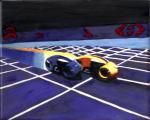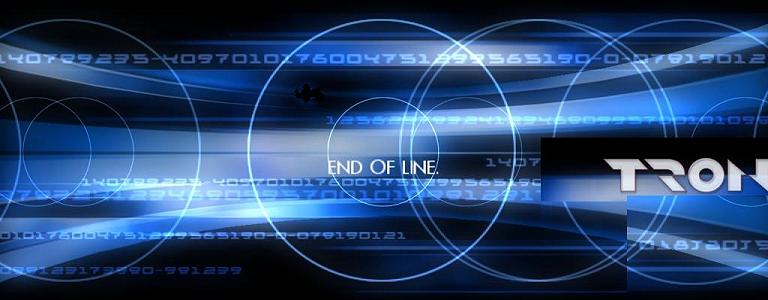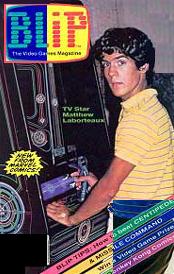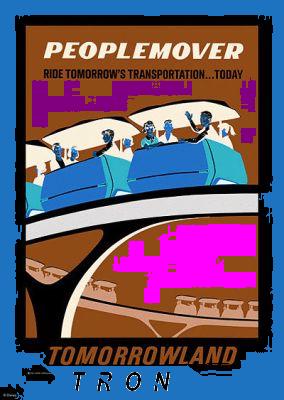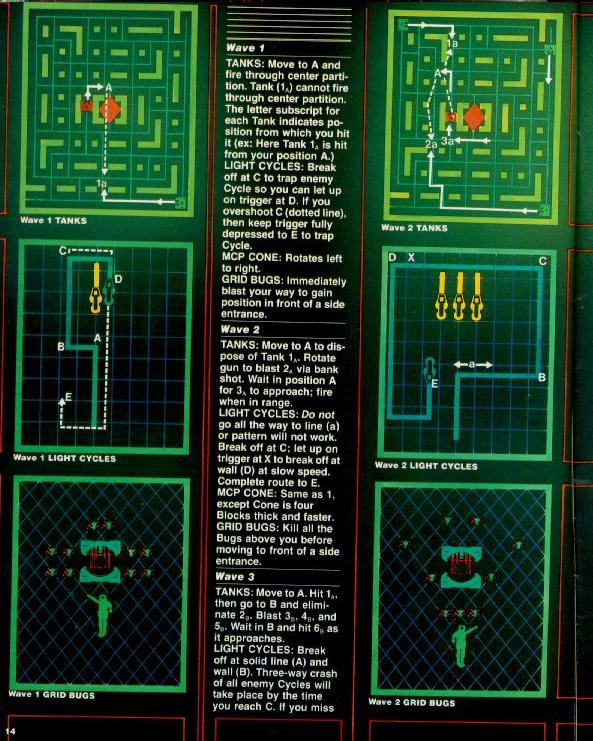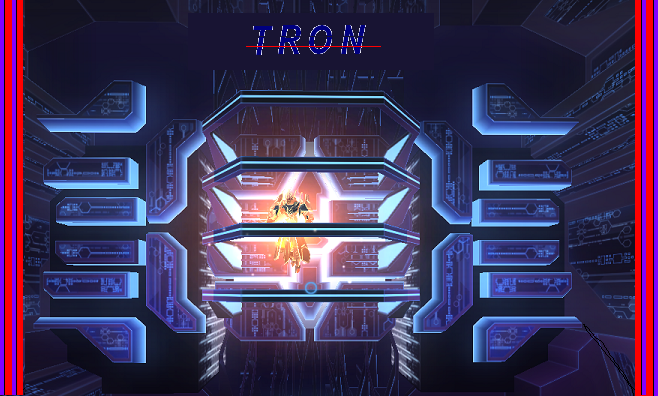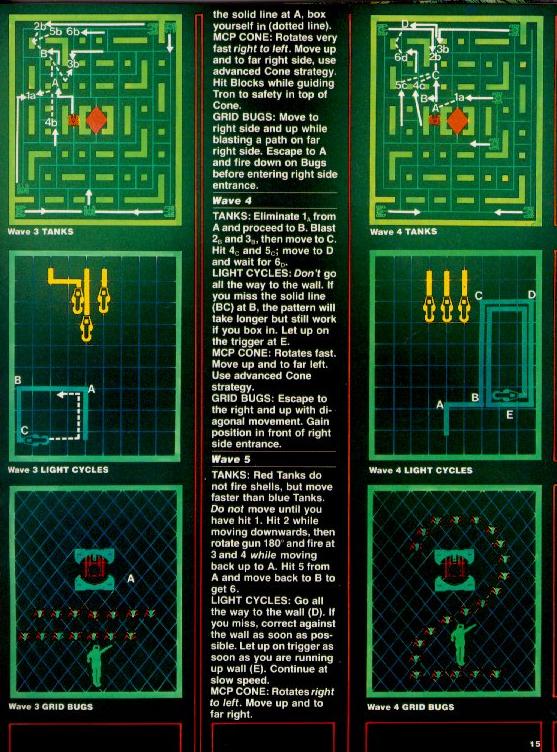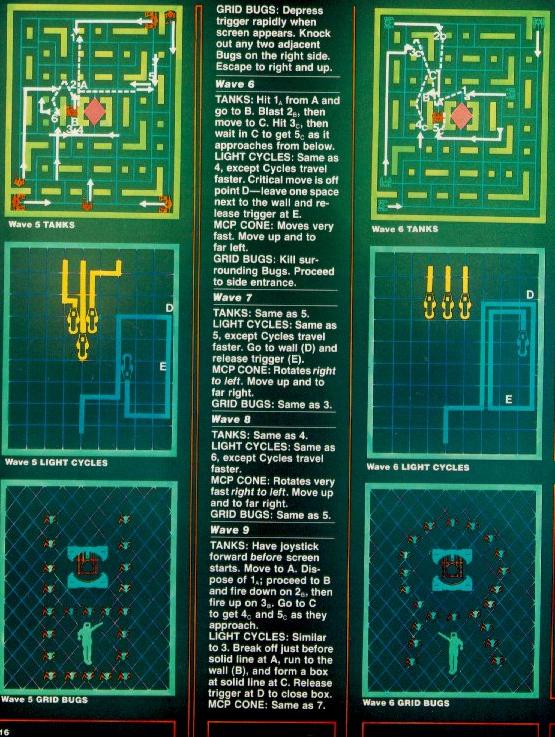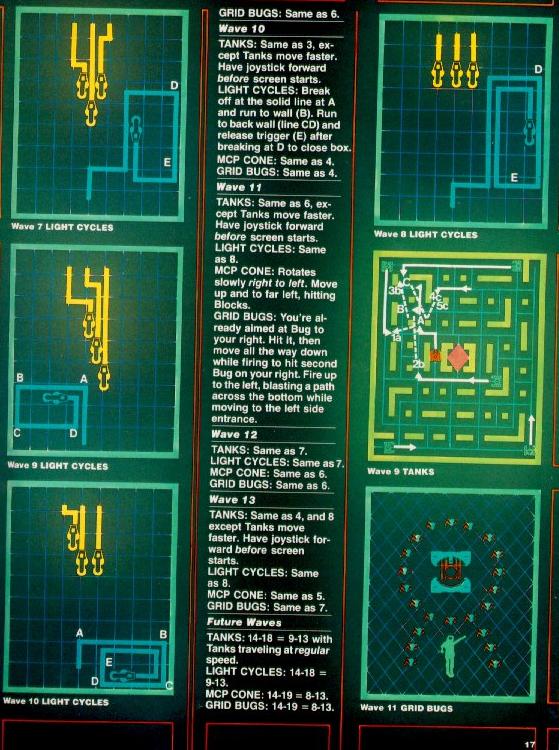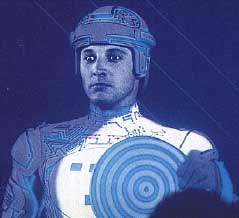
"Tron: The Movie, and the Game Discussions"
TRON
Back to: Walter Day Conversations



1982 Tron Movie - Black & White Rendering

Tron was shot in Black & White and then Color Monochromed Later
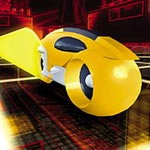
Discussion of pulled 1982 Tron Video Game High Scores and many GREAT PHOTOS to follow:
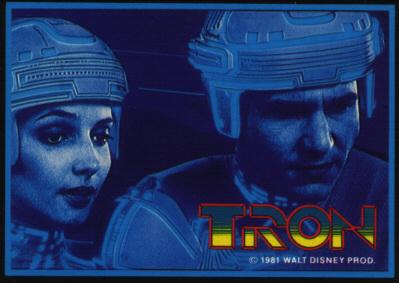
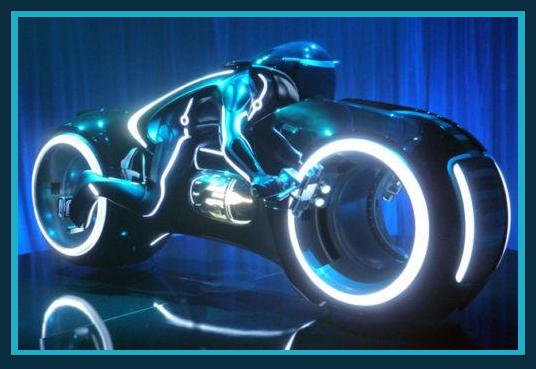


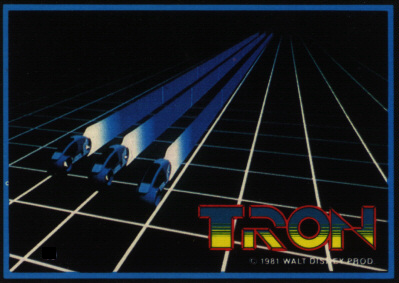
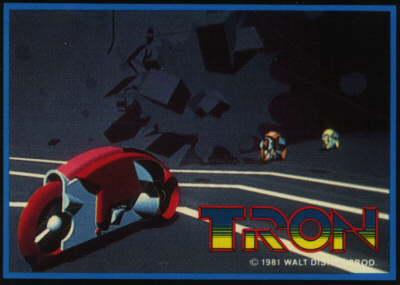


-----------------------------------------------------------------------------------------
Tron: Comparing the Old Game/Movie to the New TRON VIDEO GAME OF 2004.
TRON SOUNDS
Tron 2.0 by Buena Vista Interactive
Reviewer: Tha Wiz Review Date: 09/08/2003
20 years after the original … Tron still doesn’t cease to amaze me.
The original story behind Tron for anyone who hasn’t seen the movie (or hasn’t seen it in a while) revolved around a game programmer named Flynn who gets pulled into a computer mainframe by a dangerous program and must activate Tron (a counter program) to shut down the evil MCP (Master Control Panel) that beamed him in and is looking to take over all computer systems and ultimately humanity. Tron 2.0 acts somewhat as a sequel, but also can stand alone as it’s own story even without seeing the original film.
Movie: Tron 1982 (Yori)
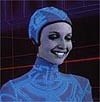
played by: Cindy Morgan
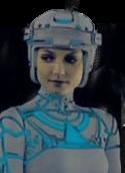

Movie: Tron 1982
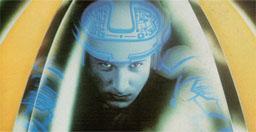
Played by: Bruce Boxleitner
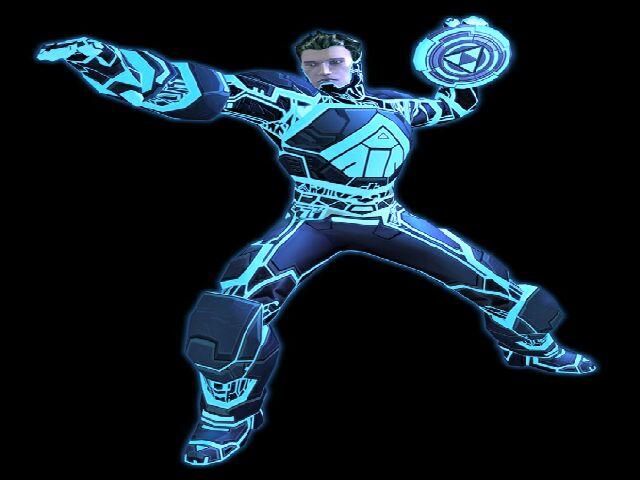

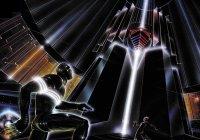
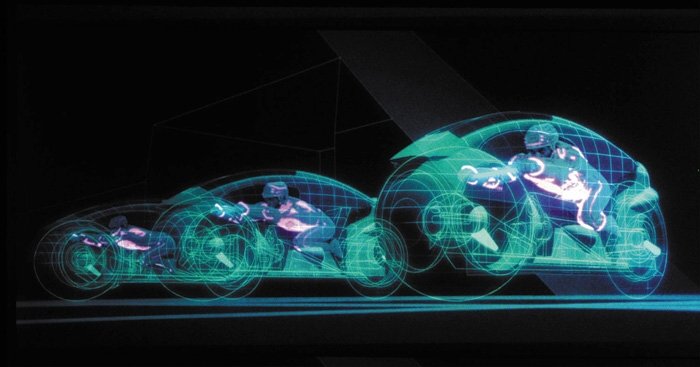
Back to: Walter Day Conversations



1982 Tron Movie - Black & White Rendering

Tron was shot in Black & White and then Color Monochromed Later

Discussion of pulled 1982 Tron Video Game High Scores and many GREAT PHOTOS to follow:








-----------------------------------------------------------------------------------------
Tron: Comparing the Old Game/Movie to the New TRON VIDEO GAME OF 2004.
TRON SOUNDS
Tron 2.0 by Buena Vista Interactive
Reviewer: Tha Wiz Review Date: 09/08/2003
20 years after the original … Tron still doesn’t cease to amaze me.
The original story behind Tron for anyone who hasn’t seen the movie (or hasn’t seen it in a while) revolved around a game programmer named Flynn who gets pulled into a computer mainframe by a dangerous program and must activate Tron (a counter program) to shut down the evil MCP (Master Control Panel) that beamed him in and is looking to take over all computer systems and ultimately humanity. Tron 2.0 acts somewhat as a sequel, but also can stand alone as it’s own story even without seeing the original film.
Movie: Tron 1982 (Yori)

played by: Cindy Morgan


Movie: Tron 1982

Played by: Bruce Boxleitner




------------------------------------------------------------------------------------ TRON 2.0: Review - TRON 2.0: Killer App for Xbox ¡V Players are digitized inside the world of a war-ravaged computer system on the verge of collapse from a seemingly unstoppable ects helpless programs, converting them into savage digital mercenaries aimed at spreading viral agents throughout the system. The security forces in the system struggle to quarantine the corruption, but they are hopelessly outnumbered by the mounting army of infected programs. Only a human "user" inside the computer world can even the odds. Armed with an arsenal of powerful digital weapons, players face off in epic, action-packed warfare along side security forces and against legions of horribly mutated programs as you fight to stop the corruption from spreading and bringing down computer systems worldwide. Currently in development by Climax's Los Angeles studio, TRON 2.0: Killer App will feature new, exclusive Xbox Live multiplayer combat, specially designed to deliver gamers a state-of-the-art online multiplayer gaming experience. Slated for release in fall 2004. ------------------------------------------------------------------------------------ Tron 2.0 takes place 20 years after the original where Dr. Alan Bradley’s son Jet (Alan was one of Flynn’s friends in the original movie played by Bruce Boxleitner) goes to his Dad’s office after hearing Dr. Bradley in distress while on the phone with him. Rather than finding Dr. Bradley or any information as to what just took place, his father’s computer MA3A (played by Cindy Morgan who played Lora in the original film …
another one of Flynn’s friends) beams him into the mainframe. You play as Jet, and unravel a neat story involving a horrible virus named Thorne who is corrupting files for his own evil intentions and is threatening computer systems worldwide. To make matters worse, ICP guards led by a master program named Kernel have run a system sweep to try and locate the viral intrusion and have blamed the corruption and problems on you. You go through several missions in order to stop the corruption that threatens to corrupt the reality in the computer world, therefore threatening the reality in real life. While trying to complete your mission, you will get some interesting and sometimes disturbing information about what’s going on in the real world with Dr. Bradley’s company while you are away and all the while being attacked by programs that should probably be helping you out and meeting few allies along the way.
Another really cool feature to Tron 2.0 is in how you acquire health, energy, and new abilities called “subroutines” by downloading them. In standard RPG style games, you usually get new abilities as you level up (the wizard got a new fireball spell, the thief can sneak better). Tron instead has you finding abilities like higher jumping, armor, stealth, and power increases in the form of nodes that can be seen in parts of the various stages as colored blocks. Jet has an energy reserve in addition to his health bar, and energy is used for things like downloading these nodes, transferring energy to bits which act as door keys, or providing weapon ammo (which I will explain here in a minute).
When you walk up to these nodes, you can use your action button to download these new abilities provided you have enough energy and then apply them to your character as you see fit in Jet’s abilities screen. Your character ability screen consists of a wheel which has a certain number of spaces allocated for attaching upgrades, so you can attach and remove them as they are needed throughout the game. These subroutines can also be upgraded in their versions, and moving from Alpha to Beta to Gold versions will of course do things like increase your stealth from 15 to 50% or make you jump 30% higher instead of 10%.
Tron
The Tron Story:
Tron is a cinematic journey into a dimension where computer programs live and breathe. The story revolves around a computer whiz named Flynn (Jeff Bridges) who is literally blasted into a mainframe computer by a security program called the Master Control Program when his search for information on his corrupt former boss Dillinger "Sark" (David Warner) goes too far. The MCP is a power-hungry program that has taken on a life of its own and will stop at nothing to gain control of the world.
With the aid of his friends Alan "Tron" (Bruce Boxleitner), Lora "Yori" (Cindy Morgan) and Dr. Gibbs "Dumont" (Barnard Hughes), Flynn's only hope is in activating Tron, the counter security program to shut down the MCP, save himself and all of humanity. It's amazing to think that only a few earlier such a fantastic story merely existed as an idea in the mind of animator Steven Lisberger. To him video games (specifically his first encounter with Pong) represented a certain "real-time animation". Lisberger was simply amazed that a person could instantly make objects move on a screen. He soon realized that he "could use computers to tell a story about video games … it seemed like a natural marriage."
Bruce Boxleitner - Tron

Bruce Boxleitner - As Alan "Tron"
Tron is most widely remembered for its revolutionary look and use of CGI (Computer Generated Imagery). But many people are not aware that this colorful film was mostly shot in black & white. The 53 minutes of effects footage was filmed with a rarely used high-quality 65mm black & white film format. Each frame was then enlarged and printed on 16" x 20" Kodaliths. Tron fell face first at the boxoffice bringing in around $30 million by summer's end. What remains irrefutable is the fact that Tron was indeed a visual masterpiece, forever changing the face of the film industry with its groundbreaking use of computer generated imagery.
Regardless of the film's performance, Tron was a success in the arcades. Industry analysts credited that two mid '82 titles alone (Ms. Pac-Man and Tron) pushed Bally/Midway to an amazing 50% plus market share, up from a respectable 35% in 1981. Clearly Ms. Pac-Man is responsible for the lion's share of this attribution. Nevertheless, Tron was popular enough to warrant a sequel, Discs of Tron (released in mid '83). 1982 was indeed a successful time for the industry as full-size game sales reached an all-time high of 450,000 units sold and with an amazing 1.2 million games on location. But '82 also hinted at the 'shake-out' that would soon occur.

Origins Of First Tron Movie in 1982
Tagline: A world inside the computer where man has never been. Never before now.
Plot Outline: A hacker is literally abducted into the world of a computer and forced to participate in gladiatorial games where his only chance of escape is with the help of a heroic security program. (more)
Original Tron Movie Plot Summary: Dillinger said flat out to the MCP "wait a minute, I wrote you!" to which the MCP replied "I've gotten 2415 times smarter since then." What does this say? Essentially the MCP itself accepts that Dillinger wrote it while noting that it has become much smarter than it was originally. Also note that the MCP seems to be firmly aware of where its code comes from, and I think it would have acknowledged in a private conversation whether Dillinger stole the core MCP code.
Sark says that "...users wrote us, a user even wrote you!" to which the MCP replies "No one user wrote me, I'm worth millions of their man-years!" Initially this would seem to be a contradiction of its earlier implicit acceptance of Dillinger as its single author. However when contrasted with its statement about it breaking into computer systems all over the world, and with Ram's statements about what the MCP does to programs if he finds them useful, it all falls into place. Note that the MCP does not automatically make programs play games, it only does this if it cannot find any useful functions in them.
My original comment was not so much that Dillinger wrote the final evolutionary version of the MCP but that he should be considered a genius because of the very fact he wrote a program that could become 2415 times smarter.
I had been toying with the idea that the MCP was Dillinger's attempt at the kind of games Flynn was writing, that he was writing a chess program and it was completely unintentional the level of AI that came out of it. Frustrated by his evident lack of success, he noticed Flynn coming in late to write his games. Seeing his chance for success, he promptly coopted Flynn's work and rose to the top where he could put the MCP in a position of prominence in the Encom computer system.
Original Video Game Plot Summary:
The Original Video Game was release in 1982 by Bally/Midway. Based on scenes from the Walt Disney movie of the same name, this game has four distinct games per level: Lightcycles, Grid Bugs, Tanks, and the MPC Cone. All four games must be completed before you can advance to the next level.
Game Cabinet Configuration and Game Play
The Video Game cabinet surfaces were painted with "circuit lines" similar to those seen in many of the film's set designs. The control panel also featured a pair of blacklights, one located just above the controls behind a clear plastic shield and one underneath the panel; together, these caused the translucent-blue joystick and the fluorescent paint used on the cabinet "circuit lines" to glow. In a darkened arcade, the effect was quite eerie

In the Lightcycle stage, the cycles have a fixed behavior pattern for each stage; and so, like Pac-Man, it is possible to find a pattern of your own which will defeat the cycles every time on that level. In the Tanks stage, if no part of your tank is touching the white line running through the center of each corridor, the enemy tanks' fire cannot hit you. If you are careful, you can move halfway into the central "transporter diamond", just far enough to get off the white line, then pick the enemy tanks off at will. Note: the tanks can still ram you, though.
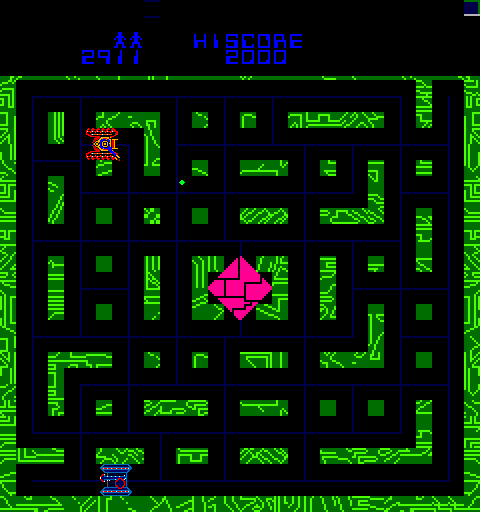

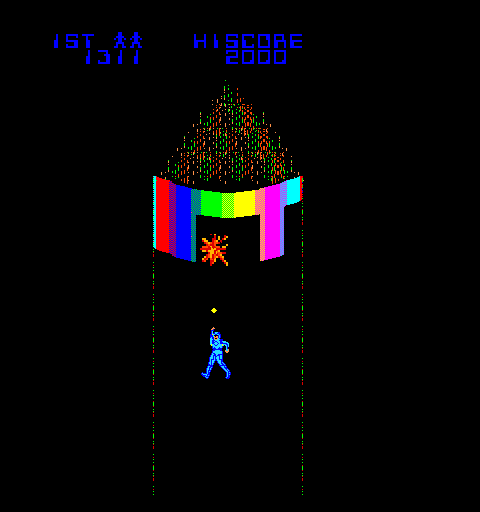
Description: Original Tron Game Play 1982
Based on scenes from the Walt Disney movie of the same name, this game has four distinct games per level: Lightcycles, Grid Bugs, Tanks, and the MPC Cone. All four games must be completed before you can advance to the next level.
Cabinet Information:
The uniquely-shaped upright cabinet featured characters and objects from the movie on the side-art, while the control panel and much of the other cabinet surfaces were painted with "circuit lines" similar to those seen in many of the film's set designs. The control panel also featured a pair of blacklights, one located just above the controls behind a clear plastic shield and one underneath the panel; together, these caused the translucent-blue joystick and the fluorescent paint used on the cabinet "circuit lines" to glow. In a darkened arcade, the effect was quite eerie!
Cabaret (or "mini") and cocktail cabinet versions were also produced.
Game Play: There are four distinct games per level.
Light Cycles: The player controls a Light Cycle that leaves a blue trail. The joystick controls the direction of travel and the trigger controls the speed of the bike. The object is force the enemy Light Cycles (yellow) to run into each other or the trails while avoiding crashing. Grid Bugs: Destroy the Grid Bugs and escape into the I/O Tower before the timer of fire.
Tanks: Destroy all enemy tanks or Recognizers to clear the level. The stick controls the movement of your tank and the whirlygig controls the direction of fire.
MCP Cone: Destroy the blocks (similar to Breakout) and move your character into the cone to clear the level. A bonus is awarded if you destroy all the blocks. The stick controls the movement of your character and the whirlygig controls the direction of fire.
Four Levels To Pass:
Probably the easiest game in Tron. The object of this game is to move Tron into the "flashing circle" which is the I/O Tower in the center of the screen before time runs out. The gridbugs (which appear in the movie for a whopping 3 seconds) multiply like mad, and if Tron touches them, he dies. But the user can move Tron's arm with the spinner to aim, and fire disks at the bugs to kill them. If Tron makes it into the I/O Tower, he is beamed up, and the game is completed. |
| Light Cycles | Probably the most popular game in Tron. This is the game that is usually what is meant when people refer to a "Tron-like" game. The object is to surround the computer's yellow cycles with a trail of light emitted from the back of Tron's blue cycle. If Tron's cycle runs into the side walls, or light from any of the other cycles, he dies. |
| MCP Cone | This game is similar to the Atari game "Breakout". The object is to clear a hole in the protective blocks in front of the MCP cone so that Tron can make it into the cone itself... Unlike the movie where Flynn jumped into the cone, and Tron just shot his disk in. Anyway. To make matters worse, the cone can have up to 6 levels of protective blocks, which rotate either clockwise, or counter-clockwise, AND the whole shebang moves down, towards Tron... |
| Tanks | The tanks game in Tron is similar to the Atari 2600/VCS game "Combat", but not really. You have to move Tron's red tank through a maze and shoot the computer's blue tanks or red recognizers. There are anywhere between 1 and 5 enemy tanks to destroy. Enemy tanks require only one shot to take out Tron's tank, while Tron must fire three shots to take out one of the computer's tanks. |
Miscellaneous LICENSOR: The Tron name and concept were licensed from Walt Disney, the makers of the film.
One of the more unique touches in the game is that the levels, instead of being "RPG" and advance through "PASCAL", "BASIC", "ASSEMBLER", etc. until you reach
Trivia The game that became Discs Of Tron was supposed to be included in Tron, but the programming was not completed in time.
As every good Tron fan knows, the grid bugs were almost entirely edited out of the movie (what was left was about two seconds of an animation of a grid bug creating itself). Grid bugs appear in the game because of pressures to develop the arcade game in time for the release of the movie (all part of Disney's sales strategy for the movie's launch -- posters and trailers ended with a tagline along the lines of: "See the movie. Play the game.") So, game programmers had to use whatever script elements they could from the movie before the film itself was actually completed. Light cycles, tanks, recognizers, and the MCP, of course, all made the final cut -- the grid bugs did not.
Tron 2.0 The Story taken from the Original Movie, "Tron" and Tron 2.0
A talented young programmer Jet Bradley is zapped into a computer mainframe to search for his missing father, Alan, creator of the Tron program. In this high-tech world, Jet finds an evil entity determined to infect Earth's computer systems by using his father's technology.
In the single-player game, Jet must travel through some 30 bizarre cyberspace locations inspired by the movie. These include the gladiatorial Game Grid, where light cycle races take place, Internet Hub City, Firewall, Corrupted Server and Power Router, to name a few.

First Inducted Into Video Game Hall Of Fame
ALL FACTS NOT VERIFIED
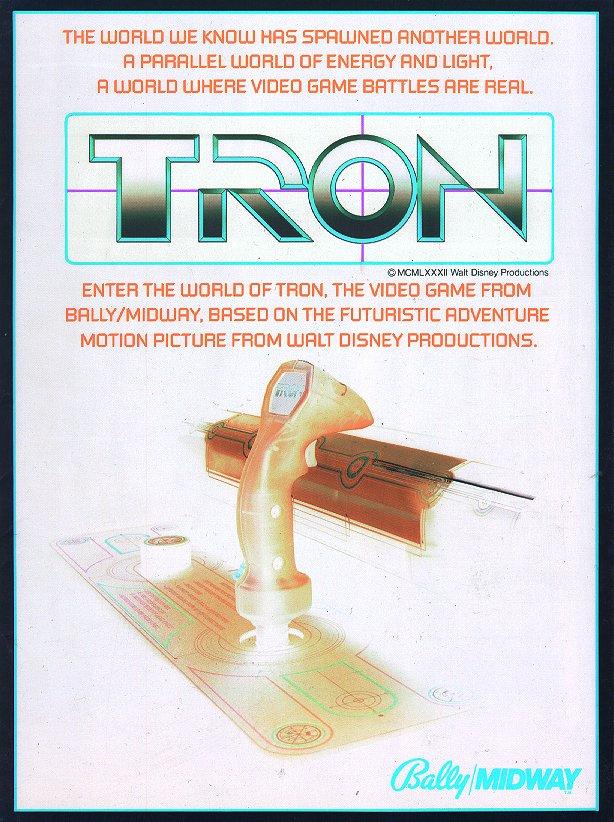
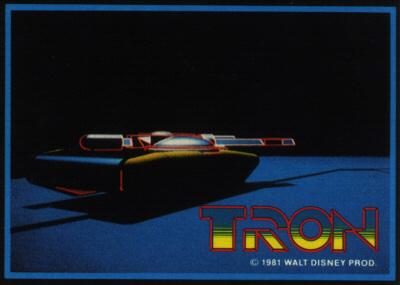
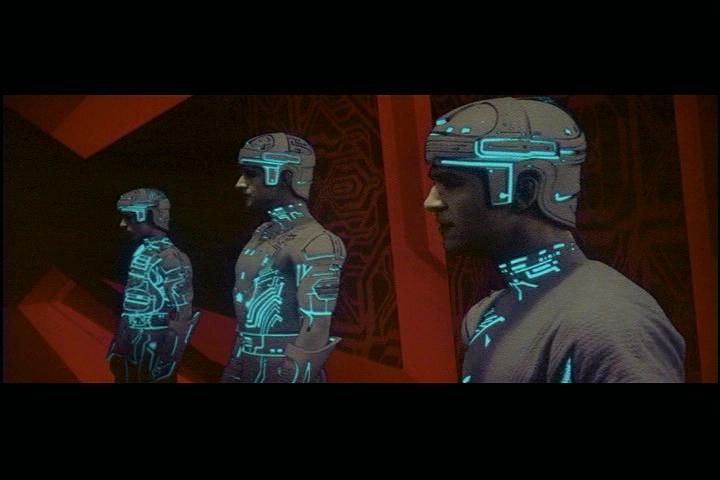

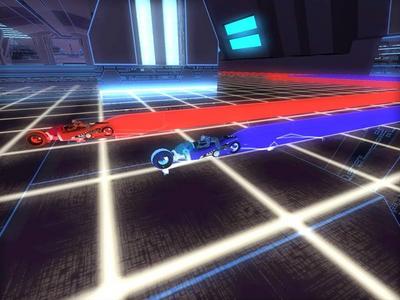
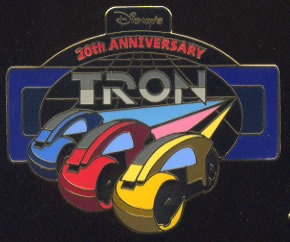
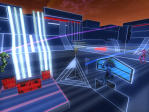
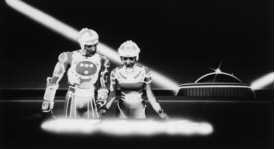

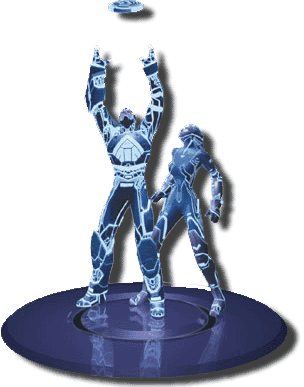


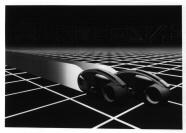


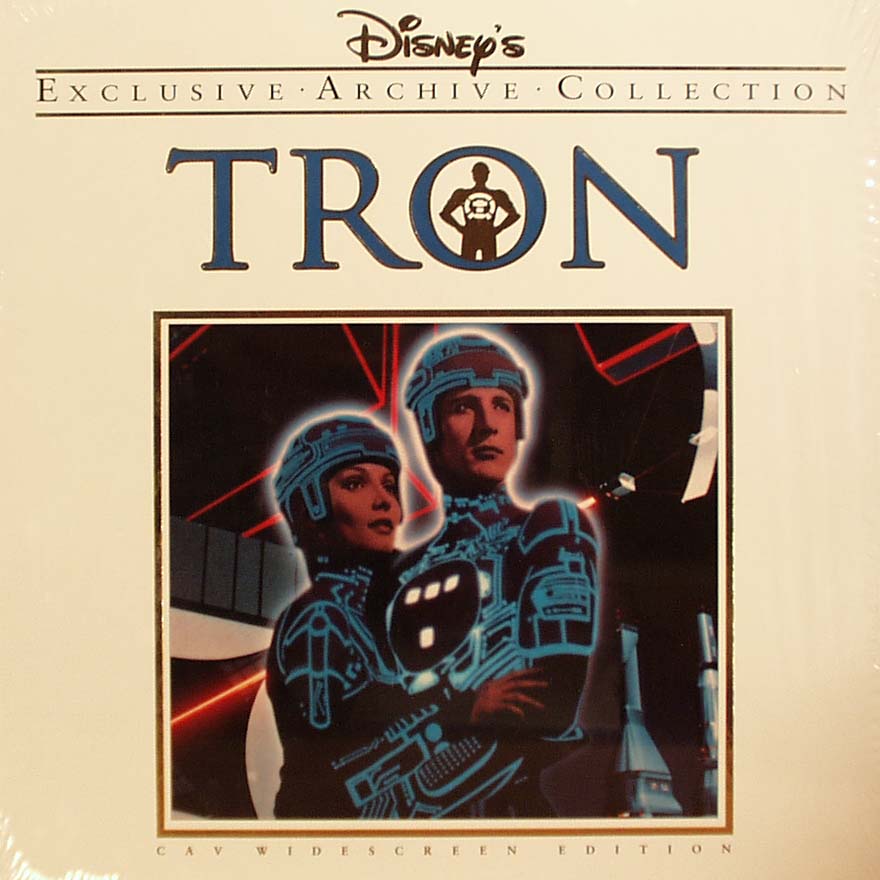

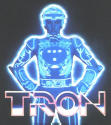
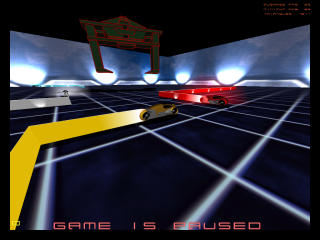



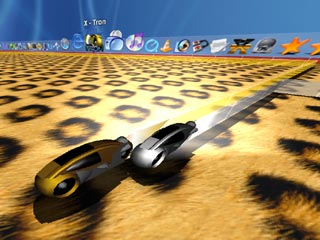
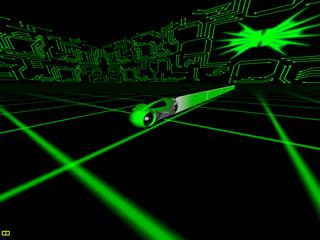



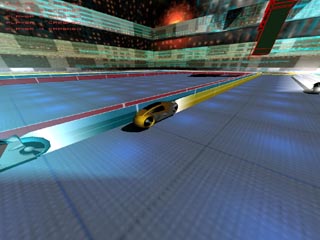

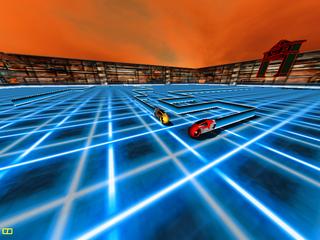
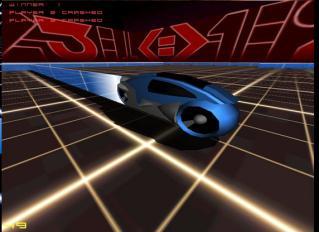

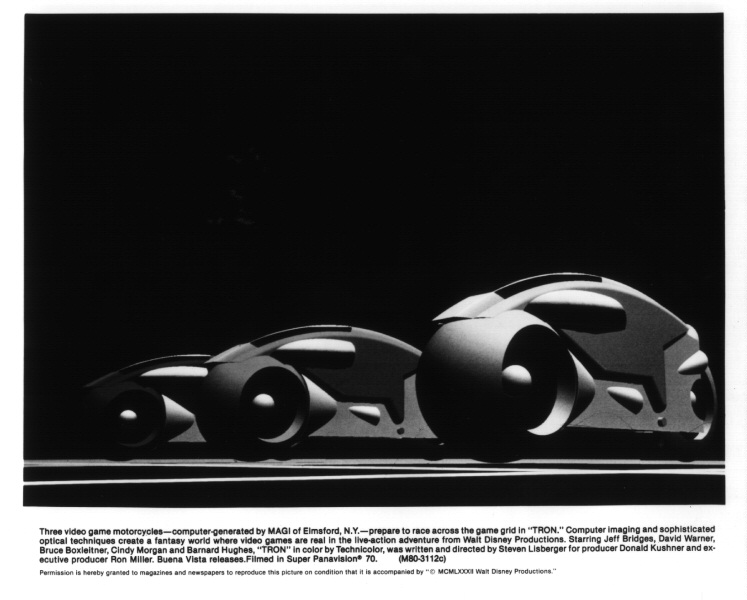
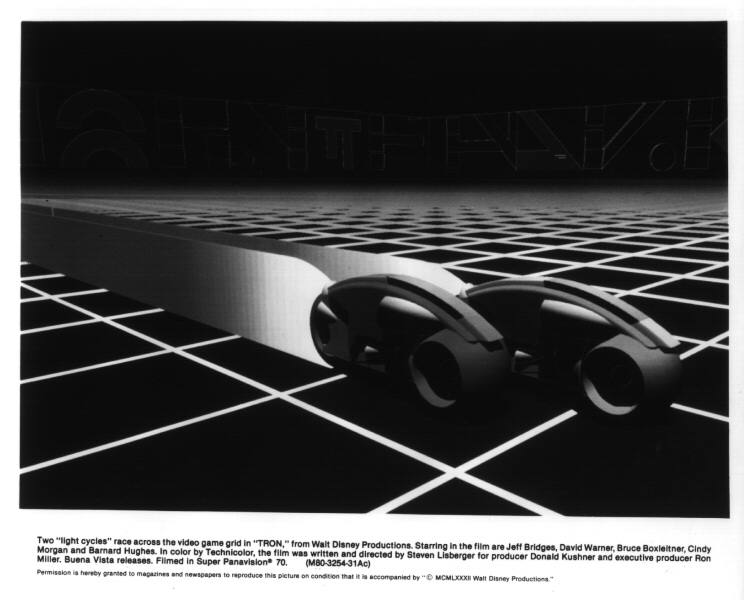

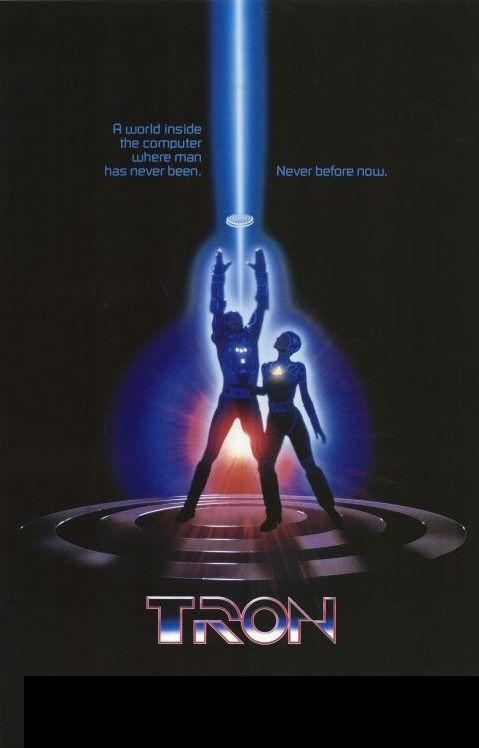
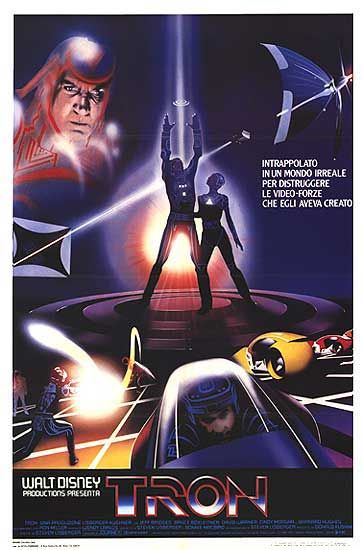
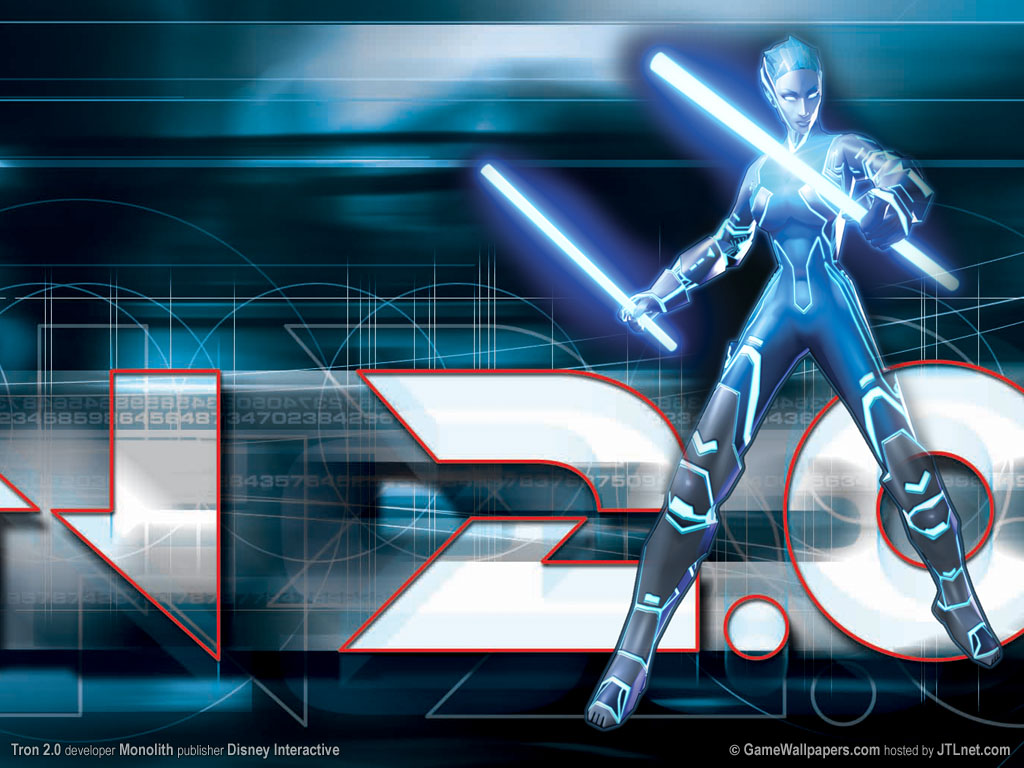
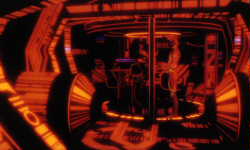
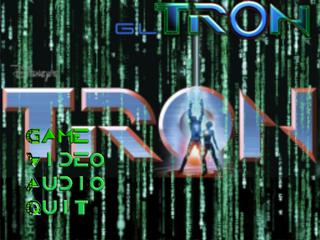


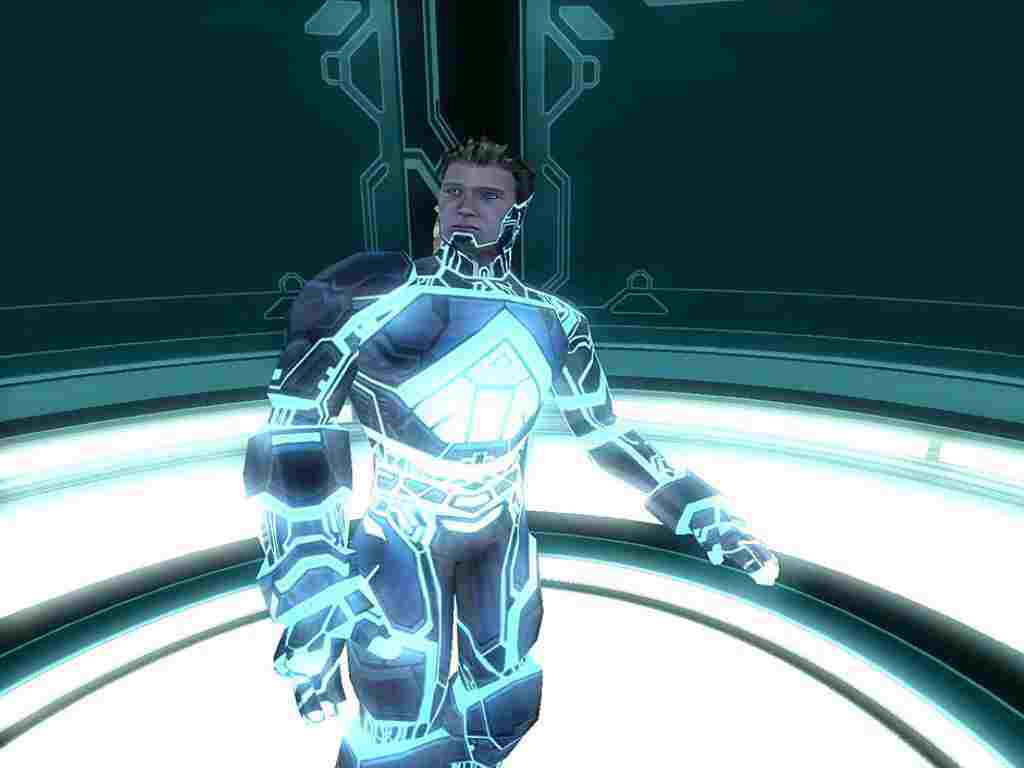


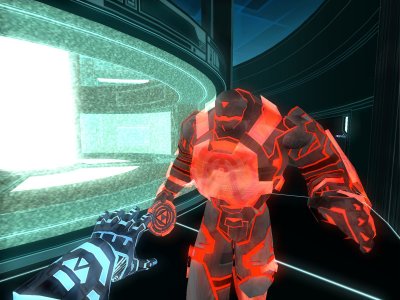

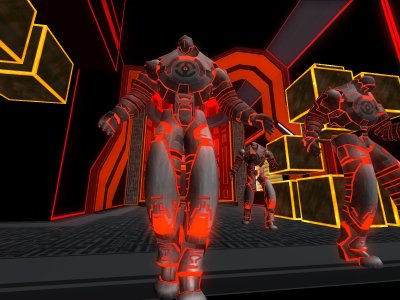
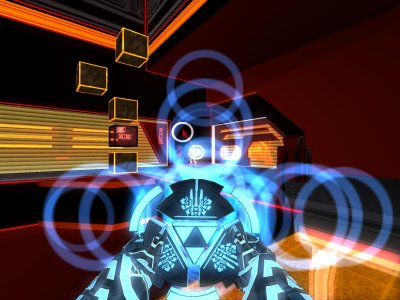




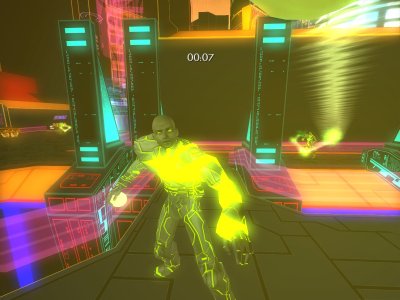
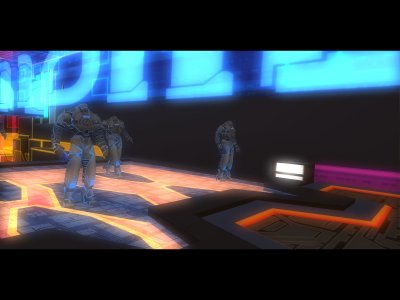
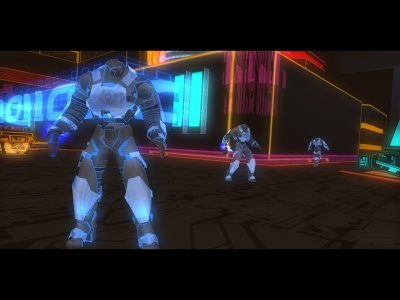


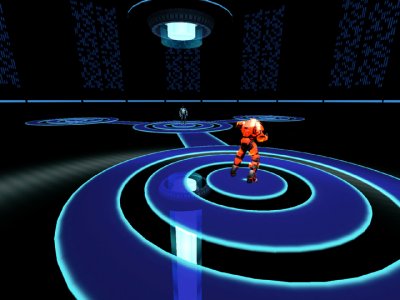
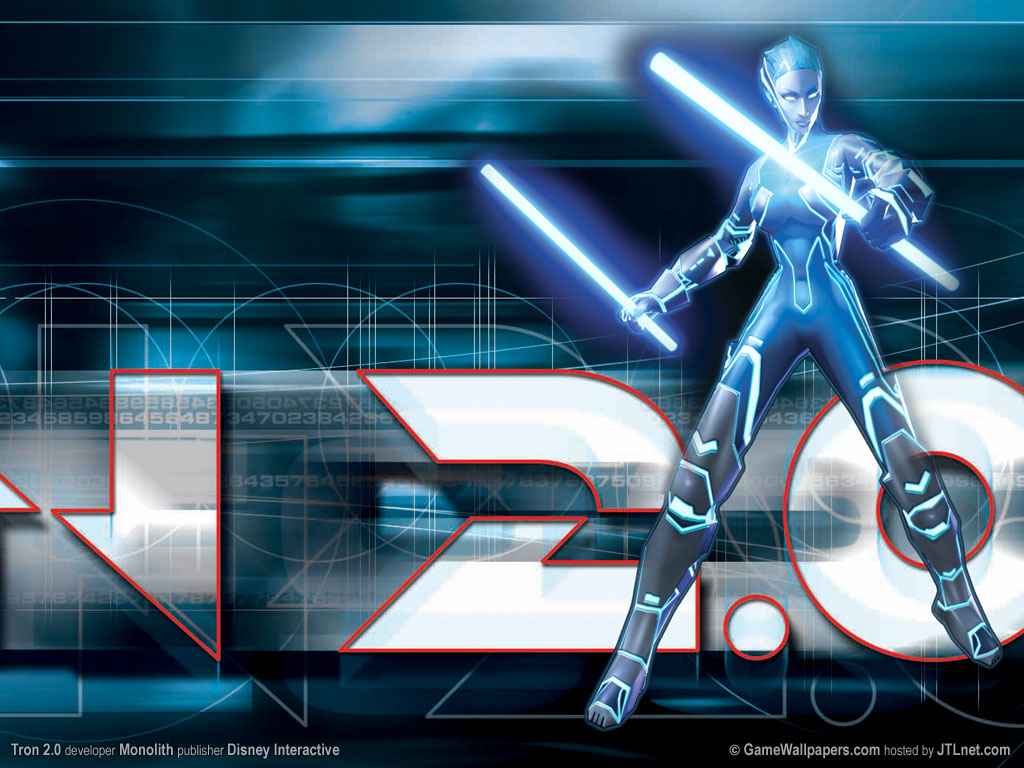
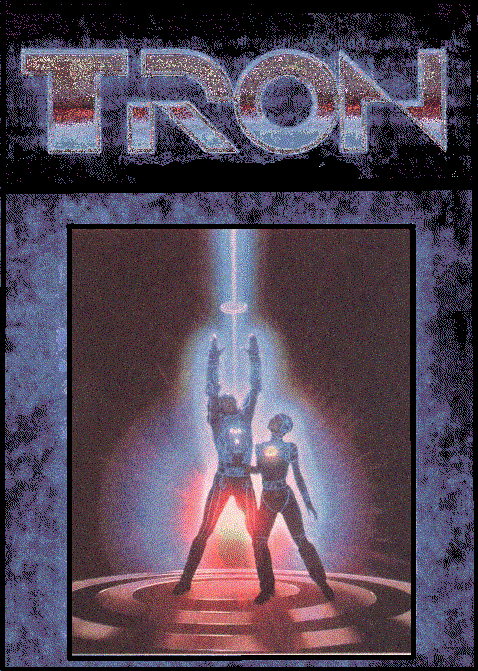

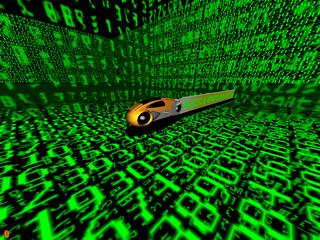
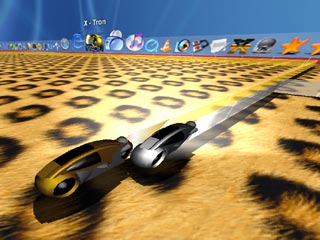
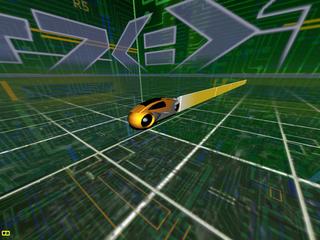
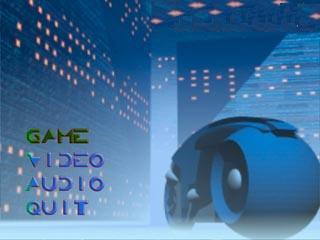
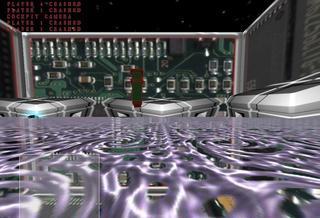
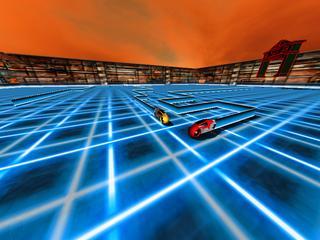


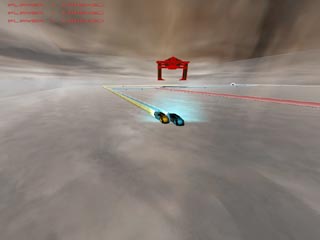
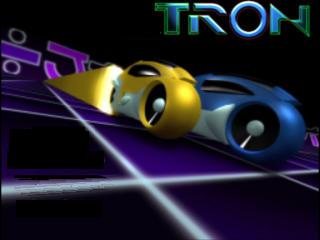
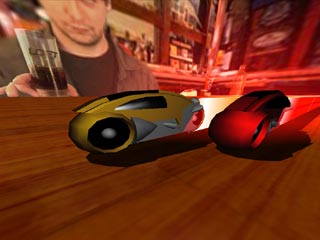



More Tron 2.0 Video Game Pictures
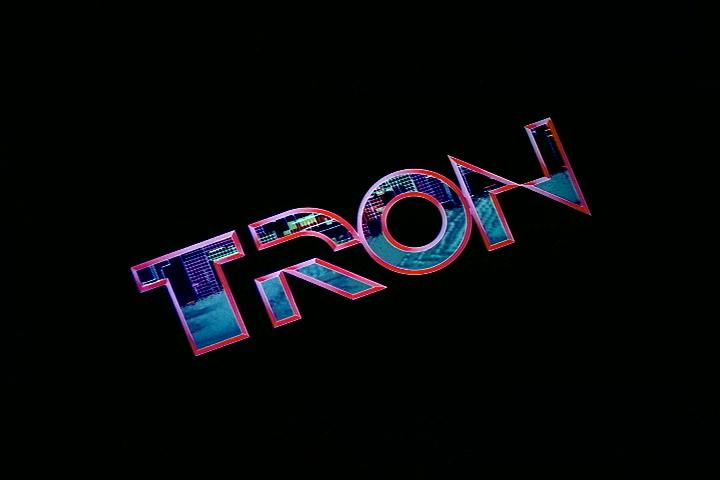
Update of Tron High Scores: 10/09/05, David Cruz now takes the number one position, beating Donald Hayes by a couple of million points. Link Tron: Link Variation: Factory Settings Platform: Arcade Rules: Difficulty : 5. Start Units : 3 Date Verification Rank % Points Player Verified Method ---------------------------------------------------------------------- 1 100.00% 6,768,288 David Cruz 09/07/2005 Video 2 67.67 % 4,580,031 Donald Hayes 06/07/2001 Referee 3 63.73 % 4,313,565 Bob Henry 02/10/1983 Referee 4 60.48 % 4,093,413 Jerry Reyes 02/15/1983 Affiliate 5 59.63 % 4,036,171 Rick Maldonado 12/09/1982 Referee 6 47.21 % 3,195,329 Sterling Ouchi 06/11/2004 Referee 7 28.94 % 1,958,829 Mark Cothran 12/29/1982 Referee 8 27.91 % 1,889,214 John Marks 05/10/2001 Referee 9 25.07 % 1,696,532 Tommi J Tiihonen 05/10/2001 Referee 10 25.05 % 1,695,463 David Palmer 06/11/2004 Referee
Thank you,
Paul Dean, (spy hunter champion)
www.spyhunter007.com
July 17, 2004 Roy Shildt (Missile Command Champion) - Challenges Billy Mitchell (pacman perfect score) to a classics competition to settle all past conclusions AND Walter Day Reports on, [August 3, 2004], that Roy Shildt's will be published as a World Champion.
Click At Desired Graphic Text For Each Introduction
Biography Commentary Questions
Click On Below Graphic Text For Spy Hunter Introduction
Tournament and Guinness Book Results From 1983-2004
Click On Below Graphic Text For All Video High Scores thru 2004
The Golden Era
Click On Below Graphic Text For Material On The Golden Years Of Video Games 1980's
Click the Below Graphic Text to read my Conversations With Walter Day
June 9, 2004 Walter Day states, "No Replay Necessary" for Paul Dean
Find A Video Game Auction Near You
Home Page
----------------- END OF PAGE
July 17, 2004 Roy Shildt (Missile Command Champion) - Challenges Billy Mitchell (pacman perfect score) to a classics competition to settle all past conclusions AND Walter Day Reports on, [August 3, 2004], that Roy Shildt's will be published as a World Champion.
Atlas - Represents The World Records

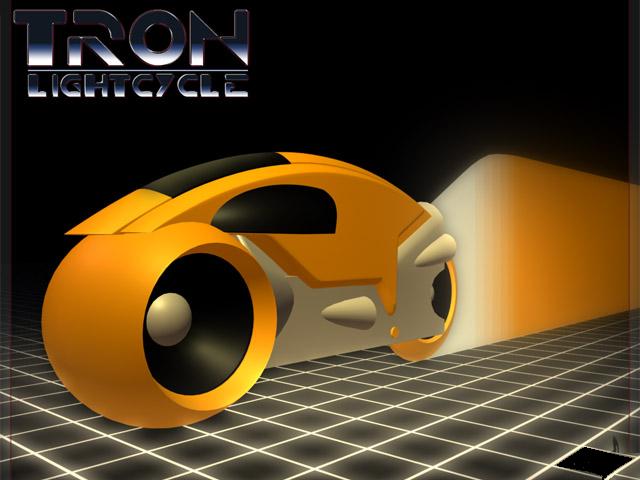
 Wednesday August 21, 2002 5:46 PM
Hi Steve:
Nice to see you on this forum...we used to correspond on Atari 2600 stuff,
unless you are a different Steve Riesenberger of course (then my apologies).
Anyway, the current WR on Robotron at TGTS is still under a million, I think,
but Abdner Ashman is gunning for it. He set 697K at Funspot 2001, and wanted
to try for 1M at Funspot 2002 but the joysticks were (get this) of different sizes !!
Good luck in getting the record...players estimate that reaching stage 30
might be required, meaning clearing three grunt waves, five brain waves, and
quite a few tank waves...oh yeah, and the rest.
if you need assistance in TG verification, I can help. I am now the chief
referee at Twin Galaxies and can assist you in verification information and
related. Cheers !!
-----------------------------------------------------------------------------------
Robert T Mruczek
Twin Galaxies - Editor and Chief referee
Star Wars classic arcade champion
rmruczek(at)doremus. (work E-MAIL)
-----------------------------------------------------------------------------------
Robert T. Mruczek
Twin Galaxies - Chief Referee
Joined: Jun 2002
Tuesday August 27, 2002 8:34 PM
------------------------------------------------------------------------------------
Wednesday August 21, 2002 5:46 PM
Hi Steve:
Nice to see you on this forum...we used to correspond on Atari 2600 stuff,
unless you are a different Steve Riesenberger of course (then my apologies).
Anyway, the current WR on Robotron at TGTS is still under a million, I think,
but Abdner Ashman is gunning for it. He set 697K at Funspot 2001, and wanted
to try for 1M at Funspot 2002 but the joysticks were (get this) of different sizes !!
Good luck in getting the record...players estimate that reaching stage 30
might be required, meaning clearing three grunt waves, five brain waves, and
quite a few tank waves...oh yeah, and the rest.
if you need assistance in TG verification, I can help. I am now the chief
referee at Twin Galaxies and can assist you in verification information and
related. Cheers !!
-----------------------------------------------------------------------------------
Robert T Mruczek
Twin Galaxies - Editor and Chief referee
Star Wars classic arcade champion
rmruczek(at)doremus. (work E-MAIL)
-----------------------------------------------------------------------------------
Robert T. Mruczek
Twin Galaxies - Chief Referee
Joined: Jun 2002
Tuesday August 27, 2002 8:34 PM
------------------------------------------------------------------------------------
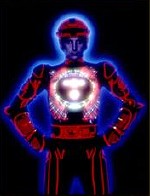 Hello Greg:
You may not have noticed this yet, but the Twin Galaxies board of referees,
after MUCH consideration over the past year, has finally decided once and for
all to wipe Robert Bonney's 960K Robotron TG settings score off the database.
Mark and I were in total agreement on it, as was Walter & Brien. Also wiped
was his 115M on Joust marathon and 325M on Robotron marathon.
As you know, these scores were from the "Wild West" days of score tracking
and gaming, and the individual also claimed a 12M on "Tron" which has since
been removed at my request, and a 1.5M on "Joust" tournament settings which
Mark petitioned for nearly two years to have removed, and I was pleased to
be the one to do it.
The current Robotron TGTS record is in the 838K range by J. Martinez followed
by Abdner's 697K from Funspot 2001.
---------------------------------------------------------------------------------------
Robert T Mruczek
Twin Galaxies - Editor and Chief referee
Star Wars classic arcade champion
rmruczek(at)doremus. (work E-MAIL)
----------------------------------------------------------------------------------------
Joined: Apr 2002
Wednesday August 28, 2002 8:45 AM
------------------------------------------------------------------------------------------
John Martinez 838,475
Sweet! A new (lower) record to shoot for, and 3rd place to boot!
Thank you.
Steve Riesenberger
Game Designer
-------------------------------------------------------------------------------------------
Hello Greg:
You may not have noticed this yet, but the Twin Galaxies board of referees,
after MUCH consideration over the past year, has finally decided once and for
all to wipe Robert Bonney's 960K Robotron TG settings score off the database.
Mark and I were in total agreement on it, as was Walter & Brien. Also wiped
was his 115M on Joust marathon and 325M on Robotron marathon.
As you know, these scores were from the "Wild West" days of score tracking
and gaming, and the individual also claimed a 12M on "Tron" which has since
been removed at my request, and a 1.5M on "Joust" tournament settings which
Mark petitioned for nearly two years to have removed, and I was pleased to
be the one to do it.
The current Robotron TGTS record is in the 838K range by J. Martinez followed
by Abdner's 697K from Funspot 2001.
---------------------------------------------------------------------------------------
Robert T Mruczek
Twin Galaxies - Editor and Chief referee
Star Wars classic arcade champion
rmruczek(at)doremus. (work E-MAIL)
----------------------------------------------------------------------------------------
Joined: Apr 2002
Wednesday August 28, 2002 8:45 AM
------------------------------------------------------------------------------------------
John Martinez 838,475
Sweet! A new (lower) record to shoot for, and 3rd place to boot!
Thank you.
Steve Riesenberger
Game Designer
-------------------------------------------------------------------------------------------

